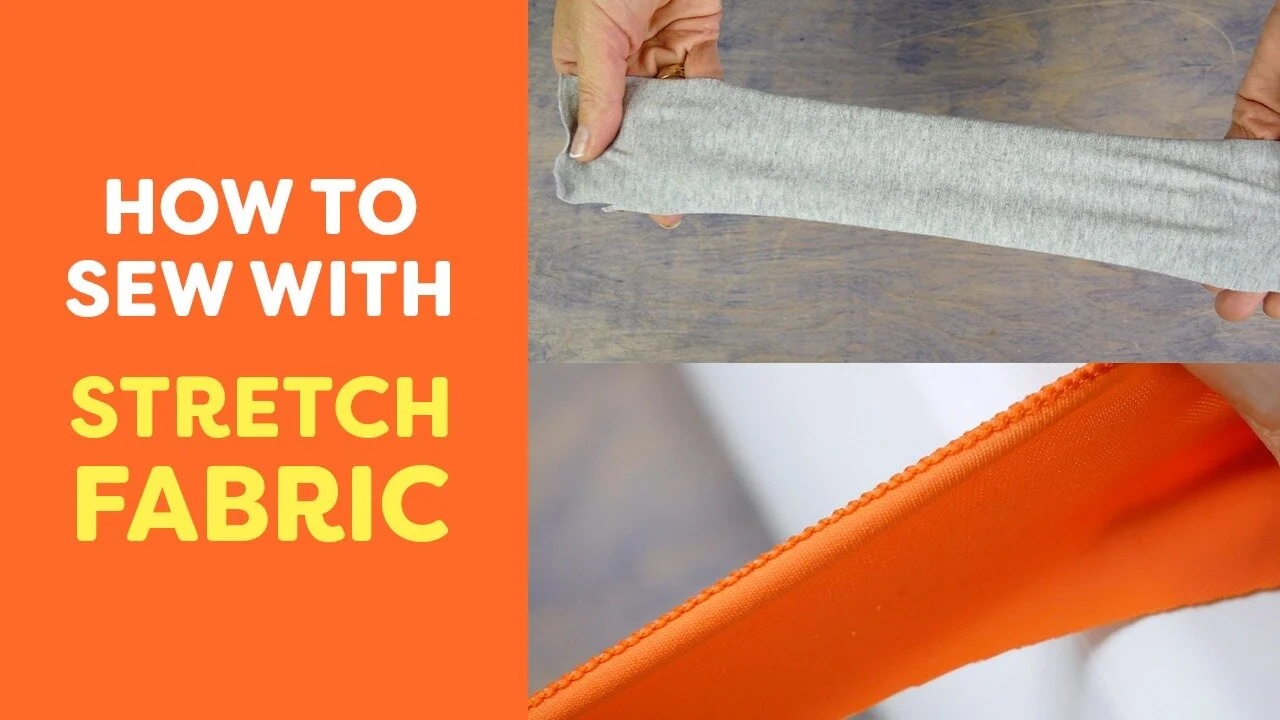How to Sew with Stretch Fabric
Maura Kang
Stretch fabrics are the most commonly used for sewing garments as they are comfortable and move with your body. However, because of their stretch, they can be troublesome if you’re inexperienced sewing with them. We’ll cover our favourite tips and tools on making sewing with stretch fabrics a breeze.
Before you even begin sewing, get yourself acquainted with the fabric you’re using. There’s a huge variety of stretch fabrics out there, and they can be made from cotton, spandex, fleece, or likely a mix of materials. Touch the material and see if pulling in one direction gives way less than the other direction. Keep this in mind when cutting your pattern and deciding what direction you want to have more stretch. A 4-way stretch fabric will stretch the same in every direction.
We always recommend washing the fabric before doing anything with it to prevent it from shrinking later.
When laying out your pattern, try to keep your pins within the seam allowance to prevent leaving obvious holes in the fabric. Some stretch fabrics will be more prone to this than others. Be careful when cutting out your pattern pieces and avoid stretching the fabric as you cut.
A knitted jersey fabric will often curl on the edges. To flatten it, you can use a starch spray and press it.
When you’re ready to begin sewing, you want to make sure you’re choosing the best needle and thread for the job. If you’re sewing in a regular domestic machine, choose a polyester thread designed for clothing construction. We recommend this 40wt thread called Designer™. Not only is it strong, but it carries a small amount of stretch, making it ideal for stretchy fabrics and garment construction. Don’t go for cotton threads as they won’t stretch enough, meaning they are more prone to breaking when the fabric is pulled.
Recommended construction thread is Designer™ 40wt all-purpose poly: https://shopwonderfil.com/product-category/designer/
For your needle, choose a ballpoint needle which has a rounded tip which helps part away the strands of the fabric. Because stretch fabrics have flex to it, this helps the needle glide through the fabric instead of punching its way through like with other fabrics. This avoids skipped stitches and damaging the fabric while you sew.
If your fabric is lightweight or tightly woven, you can also choose a stretch needle. The tip is more finely pointed, helping it slip between the weave of the fabric and also avoiding skipped stitches and damaging the more delicate fabric.
Another option is a twin needle. These are perfect for sewing hems and giving your project a professional look.
We recommend using the zigzag stitch on your sewing machine as it allows the fabric to stretch and retract with the thread. The twin needle will do two rows of zigzag stitching, offering a more secure stitch with a professional finish.
You can increase the stitch length slightly to a 2.5 to 3mm setting. The longer stitch makes it easier for the fabric to stretch. Remember to sew slowly and avoid pushing or pulling the fabric as it’s going through the machine to avoid distorting your pattern. If you find the fabric is having difficulty feeding through, you can lay a piece of tissue paper under the fabric for additional friction. The tissue paper can easily be torn away afterwards.
If you own a serger, the cover stitch will give you the best results. Not only can it cover the raw edges of your fabric, it allows the fabric to retain a high level of stretch. Pairing a twin needle with the cover stitch on the serger will give you a beautiful and secure professional stitch that is perfect for finishing a rolled hem on sleeves, pants, or collars.
If you use a wooly poly thread on the lower chain looper, your fabric will stay very elastic and soft against your skin. We used SoftLoc™, a tex 35 wooly poly thread that has a low lint finish and is incredibly soft. The best part is, it is not only safe to iron (even on high heat) but comes in 60 colors to best match your project. It is recommended for use on medium to heavy fabrics and is durable and colorfast.
A wooly poly thread like SoftLoc™ should only be used in the serger loopers and not in the needle. A regular serger thread like Designer™ should be used in the needle with it. This is ideal for all stretchy fabrics, especially those with a lot of stretch, as the thread will easily stretch along with it.
If you’re looking for a finer finish, SoftLoc™ is our recommended thread for rolled hems. A rolled hem with SoftLoc™ will create a soft and fine edge with no threads poking through.
Our recommended thread for rolled hems and upper and lower serger loopers is SoftLoc™ tex 35 wooly poly: https://shopwonderfil.com/product-category/softloc/
We hope these tips make it easier for you to sew with stretchy fabrics! If you learned anything new from this video, or if you used any of these threads in your projects, let us know on social media! Instagram @wonderfilspecialtythread or on Faceback @WonderFil, or use #wonderfil to tag us.















